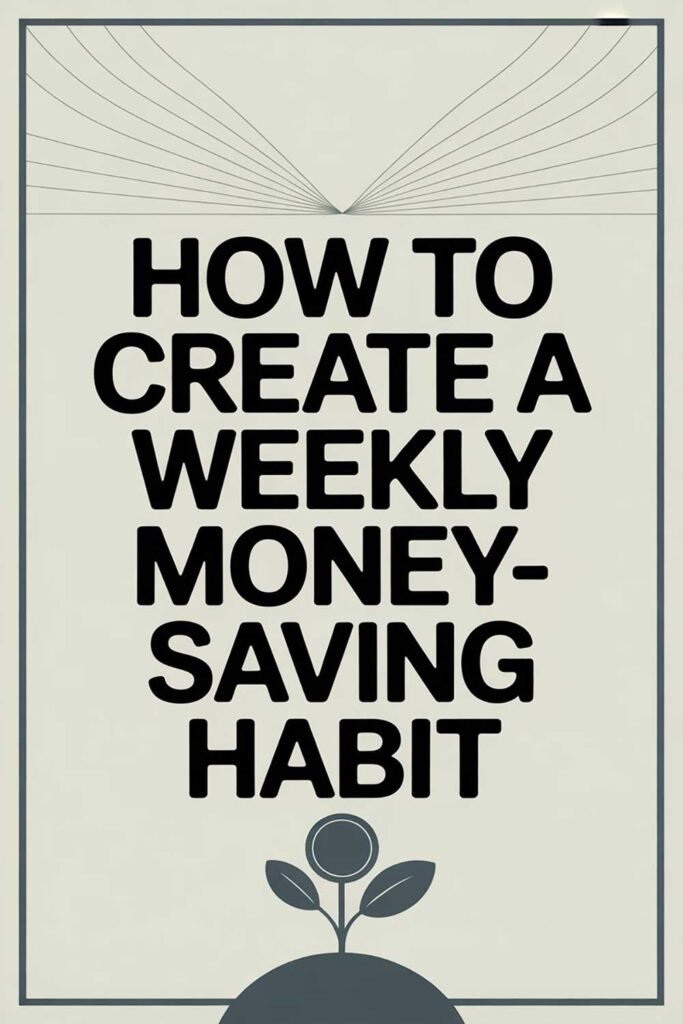How to Automate Your Savings Without Noticing
In a world where money disappears as fast as it comes in, automating your savings can be your secret weapon for financial success. You don’t need to be a budgeting genius or financial guru to save money consistently. All you need is a system that works in the background — effortlessly and invisibly.
This is where automated savings comes in. It’s like putting your money on autopilot. No guilt. No effort. And best of all — no noticeable dent in your daily life.
Let’s explore exactly how to do it, step by step.
Why Automating Your Savings Works So Well
Humans are creatures of habit — and let’s be honest, sometimes lazy ones. It’s hard to remember to save. We get busy. Bills pile up. Impulse buys happen. But what if saving money didn’t require any willpower?
That’s what automation does. It removes friction. It builds your savings in the background, quietly and reliably, with zero effort from you once it’s set up.
The concept is simple: You save first, spend later — automatically.
Step 1: Choose the Right High-Yield Savings Account
If you’re going to stash money away, let it grow while you sleep. Choose a high-yield savings account with no fees and a competitive APY (Annual Percentage Yield). These accounts typically earn much more interest than traditional savings accounts.
Popular Options:
- Ally Bank
- Marcus by Goldman Sachs
- Capital One 360
- Discover Online Savings
Make sure it’s separate from your checking account. Out of sight, out of mind.
Step 2: Set Up Automatic Transfers
Once your savings account is set up, connect it to your main checking account. Then schedule recurring transfers.
Here’s how to set it up:
- Log into your bank account.
- Choose “Transfers.”
- Select your checking as the “From” account.
- Select your savings as the “To” account.
- Choose a recurring date (ideally the day after payday).
- Start small — even $10/week adds up to $520/year.
Real Life Example:
Jasmine, a teacher from Chicago, set up a $25 automatic weekly transfer right after payday. After one year, she had over $1,300 saved without touching it once. “It felt like found money,” she said. “I didn’t even miss it.”
Step 3: Use Employer Direct Deposit Splits
If your employer offers it, have a portion of your paycheck go directly into savings. Many HR departments can split your direct deposit between multiple accounts.
Why it works: You never see the money hit your checking account, so you’re not tempted to spend it.
Pro Tip: Start with 5% of your paycheck. You’ll barely notice the difference — but your savings will.
Step 4: Try “Round-Up” Savings Apps
These apps round up your purchases to the nearest dollar and deposit the difference into savings.
Top Round-Up Apps:
- Acorns
- Qapital
- Chime
- Digit
- Bank of America’s Keep the Change®
Real Life Example:
Carlos, a freelance photographer, used Acorns to round up his debit card purchases. In six months, he saved $475 — just from spare change. “It’s like invisible saving,” he said.
Step 5: Use Budgeting Apps with Auto-Saving Features
Apps like YNAB, Mint, and Monarch Money can track your expenses and help you identify areas to cut back — then save the difference automatically.
Example: If you regularly spend $200 eating out, the app might help you reduce it to $150, then auto-save the $50 difference each month.
Step 6: Automate Cashback and Rewards Savings
If you earn cashback from credit cards, apps like Rakuten, or reward programs, set them to deposit directly into your savings account.
Hack: Treat rewards like extra savings, not spending money. Automate it to go where it matters.
Step 7: Use “No-See” Bank Accounts
Open a savings account at a completely different bank — one that’s not linked to your debit card or mobile banking app.
Set up auto-deposits into that account and forget about it. This mental trick makes the money less accessible, which reduces the urge to touch it.
Step 8: Increase Your Savings Rate Over Time
Once you’re comfortable with $20 per week, bump it up to $30, then $40. Small increases have a huge effect over time.
Even a $5 increase every quarter adds up dramatically.
Step 9: Use Windfalls Wisely — and Automatically
Got a bonus? Tax refund? Stimulus check? Set a rule that 50% of every windfall goes straight to your automated savings.
Pro Tip: Create an IFTTT (If This, Then That) rule for your accounts to route unexpected income into savings.
Step 10: Make It Invisible
Remove the temptation. Turn off balance notifications for your savings account. Don’t include it in your “spendable” budget. Let it grow quietly.
Real Life Example:
Shelly, a small business owner, used a separate online bank for her savings with no debit card access. After 18 months, she had over $8,000 saved. “I didn’t even realize how fast it was growing,” she said.
The Compound Effect of Invisible Saving
Here’s the magic: Let’s say you save just $50 a week.
That’s:
- $200/month
- $2,400/year
- $12,000 in 5 years — not counting interest!
All from a system you forget is even running.
Inspirational Quotes About Saving and Money
- “Do not save what is left after spending, but spend what is left after saving.” – Warren Buffett
- “A penny saved is a penny earned.” – Benjamin Franklin
- “Saving must become a priority, not just a thought. Pay yourself first.” – Dave Ramsey
- “Wealth consists not in having great possessions, but in having few wants.” – Epictetus
- “The art is not in making money, but in keeping it.” – Proverb
- “The best time to start saving was yesterday. The next best time is now.” – Unknown
- “Don’t tell me where your priorities are. Show me where you spend your money and I’ll tell you what they are.” – James W. Frick
- “Every time you borrow money, you’re robbing your future self.” – Nathan W. Morris
- “Save money, and money will save you.” – Jamaican Proverb
- “Beware of little expenses; a small leak will sink a great ship.” – Benjamin Franklin
- “Financial freedom is available to those who learn about it and work for it.” – Robert Kiyosaki
- “You must gain control over your money or the lack of it will forever control you.” – Dave Ramsey
- “A budget is telling your money where to go instead of wondering where it went.” – John C. Maxwell
- “It’s not your salary that makes you rich, it’s your spending habits.” – Charles A. Jaffe
- “Money grows on the tree of persistence.” – Japanese Proverb
- “Do something today that your future self will thank you for.” – Unknown
- “Saving is a great habit, but without investing and tracking, it just sleeps.” – Manoj Arora
- “When you automate, you eliminate hesitation.” – Ramit Sethi
- “Don’t save what is left after spending; spend what is left after saving.” – Warren Buffett (worth repeating!)
- “Discipline is choosing between what you want now and what you want most.” – Abraham Lincoln
🧠 Picture This
You open your savings account a year from now. It’s got $2,000… $5,000… maybe even $10,000 sitting there — and you didn’t even have to think about it.
No stress. No second-guessing. No guilt. It just happened, while you lived your life.
Imagine what that kind of financial cushion would feel like. The relief. The peace of mind. The ability to say “yes” to opportunities instead of stressing over bills.
It all started with one decision: to automate.
Are you ready to let your money grow while you sleep?
📣 Please Share This Article
If this article helped you or inspired you, please share it with someone else who might benefit from building savings — effortlessly. It could change their life.
⚠️ Disclaimer
This article is for informational purposes only and reflects personal experience. Results may vary. Always consult a financial advisor or planner for advice specific to your situation. We are not responsible for any financial decisions made based on this content.






